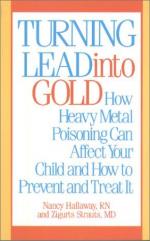|
This section contains 1,868 words (approx. 7 pages at 300 words per page) |

|
Heavy metals are generally defined as environmentally stable elements of high specific gravity and atomic weight. They have such characteristics as luster, ductility, malleability, and high electric and thermal conductivity. Whether based on their physical or chemical properties, the distinction between heavy metals and non-metals is not sharp. For example, arsenic, germanium, selenium, tellurium, and antimony possess chemical properties of both metals and non-metals. Defined as metalloids, they are often loosely classified as heavy metals. The category "heavy metal" is, therefore, somewhat arbitrary and highly non-specific because it can refer to approximately 80 of the 103 elements in the periodic table. The term "trace element" is commonly used to describe substances which cannot be precisely defined but most frequently occur in the environment in concentrations of a few parts per million (ppm) or less. Only a relatively small number of...
|
This section contains 1,868 words (approx. 7 pages at 300 words per page) |

|


